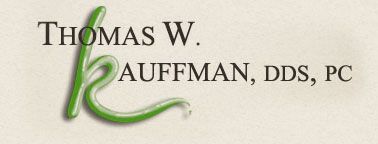Local Anesthesia for Dentistry: An In-depth Look at Local Anesthetics
Feel Comfortable During Your Dental Visit in Atlanta, GA
Local anesthetics are essential tools in modern dentistry, providing pain relief during various dental procedures. Dentists use these medications to ensure patients have a comfortable and pain-free experience while receiving dental care.
At Thomas W. Kauffman, DDS, PC, our Atlanta dentist will ensure that every patient feels comfortable during their visit. To schedule an appointment, contact us today by calling (404) 524-1981.
What Is Dental Anesthesia?
Local anesthetics is the use of anesthetic medication designed to block sensation in a specific area of the body. In dentistry, these include drugs such as lidocaine, articaine, prilocaine, mepivacaine, and bupivacaine, which create numbness in the oral cavity, including the mouth, gums, and teeth. This numbing effect is crucial for ensuring that dental procedures are virtually painless.
These anesthetic medications function by interfering with the transmission of pain signals from nerve endings to the brain. They primarily block sodium channels in nerves, preventing the nerves from sending pain signals.
With these anesthetic medications, dentists can perform a wide array of procedures, such as fillings, extractions, root canals, and gum surgeries, with minimal or no pain for the patient.
Types of Local Anesthetics in Dentistry
There are several types of local anesthetics used in dentistry. Our dentist will always inform you of what is being used before your dental treatment.
Common local anesthetics include:
- Lidocaine: One of the most commonly utilized local anesthetics in dentistry. It’s renowned for its rapid onset of action and effectiveness in providing relief from pain.
- Articaine: This anesthetic is gaining popularity in dental practice due to its high potency and ability to perform well in inflamed tissues, making it an excellent choice for certain dental procedures.
- Mepivacaine: This is preferred when a longer-lasting numbing effect is required. It’s particularly suitable for more extended and complex dental procedures.
- Prilocaine: This is often chosen for patients who may be sensitive to other local anesthetics, as it carries a lower risk of causing allergic reactions.
- Bupivacaine: Used in situations where prolonged anesthesia is necessary. It offers an extended duration of action, making it suitable for specific dental treatments.
When considering the use of a local anesthetic agent or local anesthetic agents, it’s crucial to be aware of their potential for systemic toxicity if administered in excessive doses. Each agent, including bupivacaine, lidocaine, articaine, prilocaine, and mepivacaine, has specific contraindications and requires careful consideration for patients with conditions such as hepatic or renal impairment, cardiovascular disease, or those who are elderly, pregnant, have bleeding disorders, or are on anticoagulants. Understanding these factors ensures the safe and effective use of local anesthetics in dental care.
How a Local Anesthetic Is Administered
Injections
The most common method of administering a local anesthetic is through injections. These injections are usually targeted at the gum tissue or near the nerves of the affected area. The inferior alveolar nerve (IAN) is particularly significant in dental anesthesia, as blocking the IAN can directly target this nerve to provide numbness to the lower jaw, teeth, and buccal mucosa. Additionally, maxillary buccal infiltration involves injecting anesthetic near the maxillary molars to block the nerves supplying sensation to these areas, a technique often enhanced by articaine for higher success rates in anesthetizing mandibular molars.
Topical Anesthetics
Before administering injections, dentists often apply topical anesthetics to the surface of oral tissues. These topicals numb the area, reducing the pain associated with the insertion of the injection needle.
The Wand (Computer-Assisted Anesthesia)
The Wand is a computer-assisted system designed to precisely control the flow rate and pressure of the anesthetic solution during injections. This advanced technology enhances the accuracy and comfort of the injection process for patients.
Treatments Where Local Anesthetics May Be Used
Local anesthetics are used in various dental treatments to provide pain relief and ensure patient comfort during the procedures. Common treatments include:
- Dental Fillings: A local anesthetic is frequently used when dentists need to remove decayed tooth material and fill cavities.
- Tooth Extractions: When a tooth needs to be removed due to severe damage, infection, or orthodontic reasons, a local anesthetic is administered to numb the area around the tooth, making the extraction painless.
- Root Canal Therapy: Root canals involve the removal of infected or damaged pulp inside a tooth. Anesthetics are essential to numb the tooth and surrounding tissues to alleviate pain during this procedure.
- Temporomandibular Joint (TMJ) Injections: In cases of TMJ disorders or jaw pain, a local anesthetic may be used for therapeutic injections to alleviate pain and discomfort.
- Maxillofacial Surgery: In oral and maxillofacial surgery, local anesthetics play a crucial role in procedures involving the facial bones, dental implants, and soft tissues, ensuring patient comfort and pain management.
- Periodontal Treatment: Periodontal treatments such as scaling and root planing, which aim to treat gum disease, may involve the use of local anesthetics to make the procedure more comfortable. Additionally, injections into the periodontal ligament are utilized for targeted anesthesia during these treatments, offering rapid onset but requiring careful consideration of their short duration and potential complications.
Frequently Asked Questions
Are there any risks associated with local anesthetics?
When administered correctly by a trained dental professional, local anesthetics are generally safe. Most risks arise from factors such as overdose, allergic reactions, or improper administration.
Are there alternatives to local anesthetics in dentistry?
For certain minor dental procedures, alternatives such as nitrous oxide (laughing gas) or conscious sedation may be considered. However, these options depend on the procedure’s complexity and the patient’s preferences, and they should be discussed with the dentist.
Schedule an Appointment at Thomas W. Kauffman, DDS, PC
If you have any concerns or questions about local anesthetics, don’t hesitate to reach out to our dentist. We’re equipped to provide you with personalized information and address any specific concerns you may have. Your oral health and comfort are our top priorities.


